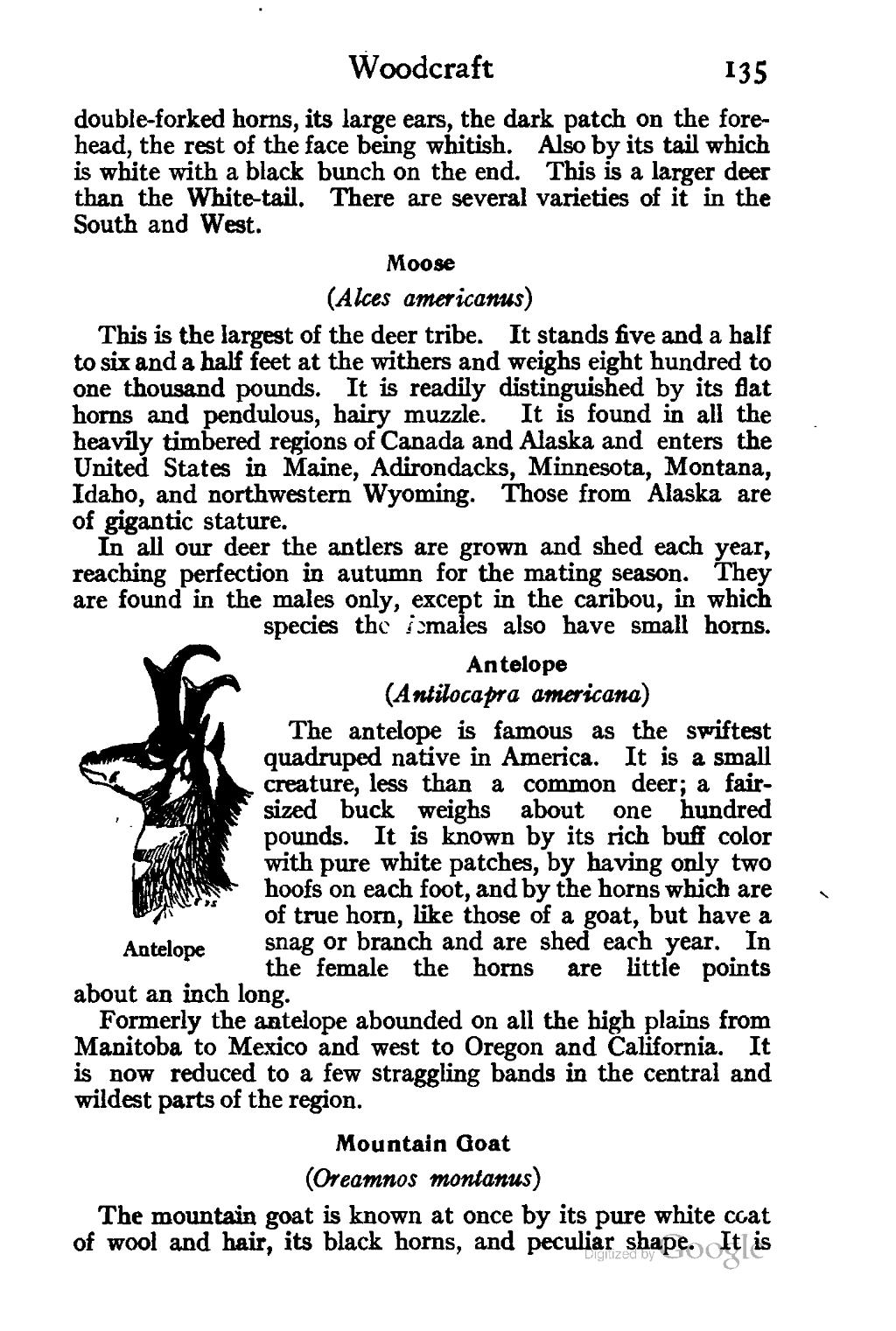Woodcraft I35 double-forked horns, its large ears, the dark patch on the fore- head, the rest of the face being whitish. Also by its tail which is white with a black bunch on the end. This is a larger deer than the White-tail. There are several varieties of it in the South and West. Moo?e (Al?s americanus) This is the largest of the deer tribe. It stands five and a half to six and a half feet at the withers and weighs eight hundred to one thousand pounds. It is readily distinguished by its flat horns and pendulous, hairy muzzle. It is found in all the hearfly timbered regions of Canada and Alaska and enters the United States in Maine, Adirondacks, Minnesota, Montana, Idaho, and northwestern Wyoming. Those from Alaska are of gigantic stature. In all our deer the antlers are grown and shed each year, reaching perfection in autumn for the mating season. They are found in the males only, except in the caribou, in which species the ismales also have small horns. Antelope (A?tilocapra americana) The antelope is famous as the swiftest quadruped native in America. It is a small creature, less than a common deer; a fair- sized buck weighs about one hundred pounds. It is known by its rich buff color with pure white patches, by having only two hoofs on each foot, and by the horns which are of true horn, like those of a goat, but have a Aat?lop? snag or branch and are shed each year. In the female the horns are little points about an inch long. Formerly the antelope abounded on all the high plains from Manitoba to Mexico and west to Oregon and California. It is now reduced to a few straggling bands in the central and wildest parts of the region. Mountain Qoat (Oreamnos montanus) The mountain goat is known at once by its pure white ca, at of wool and hair, its black horns, and
Stránka:roll 1911.djvu/156
Z thewoodcraft.org
Tato stránka nebyla zkontrolována
